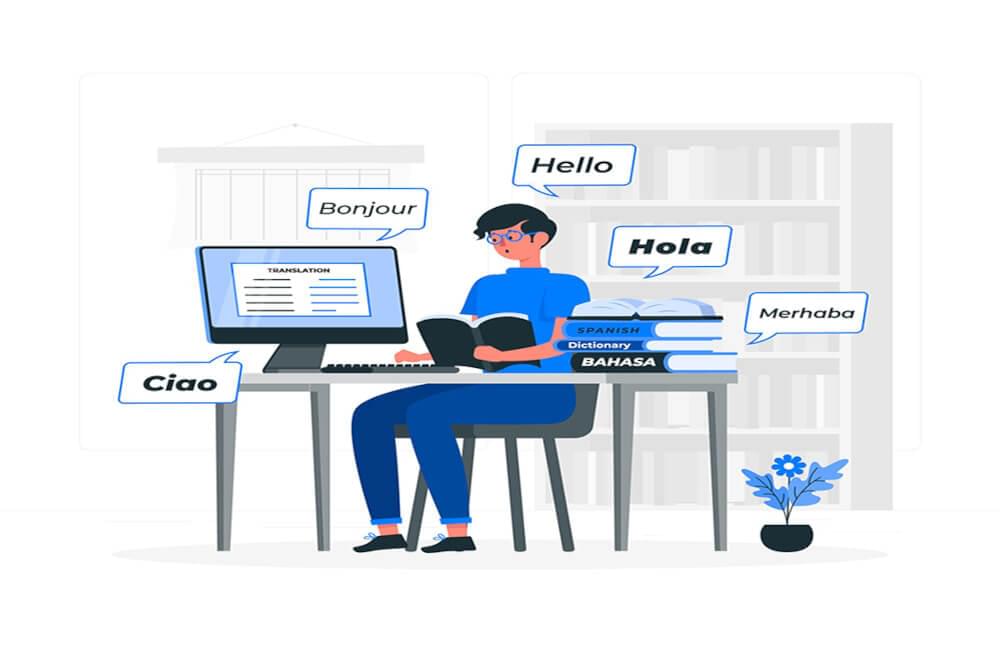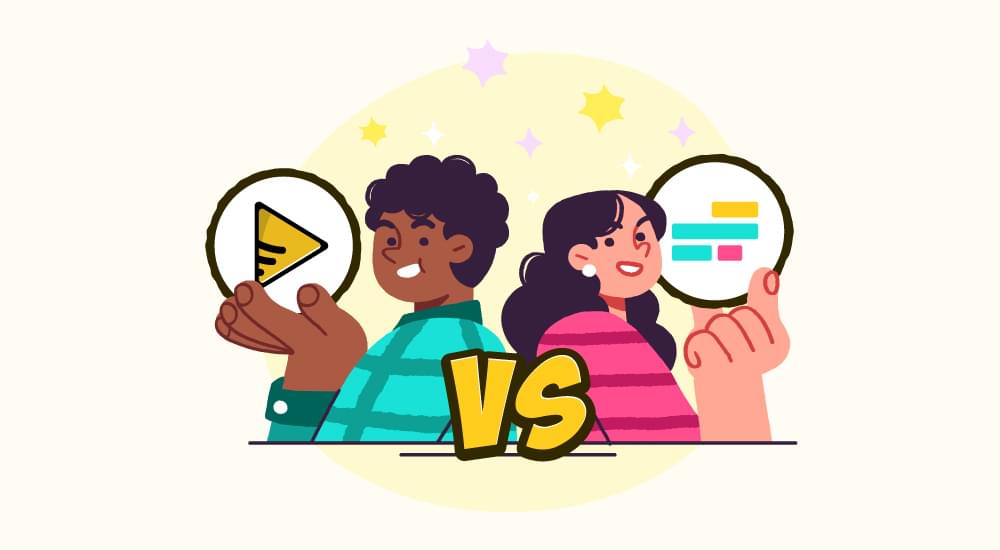
benefits of subtitles in video
8 Transcription and Translation Mistakes to Avoid in 2022
Transcription and Translation errors are expensive and time-consuming to fix, so it’s well worth being aware of the most common transcription mistakes that plague the lives of journalists/reporters/writers in different niches.
The list of transcription and translation mistakes discussed in the blog are meant to serve as a reference. A transcription and translation mistake can be any one of the following: failure to hear something correctly, misunderstanding what was said, misinterpreting punctuation or grammar in a statement, missing an obvious typo in something that was typed out during transcription, etc.
1. Misinterpretation of words, phrases or idioms
This is the most common type of error in transcription, and it’s usually easy to correct because both you and your editors will most likely be able to hear what was said pretty clearly.
Nevertheless, if you don’t take the time to double-check that everything has been transcribed correctly, then there are sure to be errors that slip by even the closest of eyes.
2. Missing key words
The quickest way to fix this is to simply play the audio as you type out your transcript, so you can immediately pick up on any missing words or phrases before they become a problem down the line.
It’s also helpful to have an editor look over your work just in case there was a brief pause that you might’ve overlooked during transcription of words. Keep in mind that it’s not necessary for every word or phrase to be included verbatim in a transcript, but if important information is being left out then it’s best to go back and repeat what was said during transcription.
In some cases it might be better to write out an approximation of what was meant rather than leaving something out entirely. The reason why all of this is relevant has to do with the context of what was said, who said it and how they were saying it.
3. Stuttering or repeating words or phrases
This is perhaps the most common transcription error for new journalists because it’s easy to miss when you’re trying to keep up with someone as they speak.
However, translation and transcription editing softwares can catch these mistakes fairly easily so there’s no reason why this should continue to be an issue down the road.
4. Missing punctuation or capitalisations

This is another common type of transcription error, and it’s usually easy to fix when you can hear what was actually said. However, if you don’t read through the transcript before publishing it, then errors like these will get published for all to see!
5. Contradicting or conflicting information
A transcription error that’s largely caused by not taking the time to read through your transcript before publishing it. It can be easy to miss this sort of error because you might only catch the conflict after looking over your work for the third or fourth time.
But there are also times when more than one person will be interviewed on a topic and their statements will contradict one another even if they aren’t aware of it.
This type of issue really calls into question the validity of whatever was said by both parties involved, so it’s best to go back and check what was actually said at least one more time before publishing it online.
6. Missing key details
You can easily miss on adding key details by not taking enough time to read through your transcript one more time before publishing it.
You’ll make these sorts of mistakes in the heat of the moment so you need to keep track of them and double-check everything before sending it in for editing.
7. Poor or sloppy grammar/punctuation

The English language is hard enough as it is, but when people aren’t paying close attention then errors like this can be published without anyone realizing what was originally said (and meant).
It’s easy to catch these types of errors when you’re reading over your work because they stick out like a sore thumb, but if there are too many typos and grammatical issues then it’s best to ask an editor or proofreader to check your work over.
8. Misspelled names
Incorrect/misspelled names should be easy enough to catch when you’re double-checking everything one last time, but it’s also the kind of error that could wind up in print if not kept track of during transcription.
You should always spell out full names when they are first introduced because it helps your reader distinguish between who is who, and if you don’t do this then people might get confused about what was said without realizing it.
Thankfully, all of this information will come through loud and clear when you read over your transcript one more time before sending it off to your editor for final approval.
Transcription vs translation: the importance of this distinction

It is important to note that you can’t perform a translation without first having properly transcribed an audio file.
Why? Transcription and translation serve two different purposes: transcription aims at rendering as faithfully as possible what was said (or meant) by the speaker, while translation strives to convey the content in another language.
Although many translators are also capable of performing transcriptions, it is not advisable for them to do their own official transcripts, because these are often needed within specific timeframes that cannot always be met when they must bother with transcription––especially if they have limited experience.
Therefore, it becomes necessary to outsource these tasks or make use of the best auto transcription tools out there… But make sure you choose your transcriptionist well! If not done right, this could have serious consequences on the quality of your translation.
How to avoid common transcription mistakes
It is easy for grammatical, syntactical, or linguistic errors to creep into a transcript, but the following are especially critical:
1. Verbatim vs summarised reports
You must never summarise what was said if you are hired as a verbatim transcriber! If you do so, it will be difficult for your client to find specific elements without being distracted by words that were not uttered (especially if they’re new concepts).
This can be detrimental to searches and operations related with contracts. For example: Your client asks you to complete 101 official transcripts covering 101 hours of spoken French that contains hundreds of ideas; summarising each idea would be very time-consuming during transcription.
2. Accents, punctuation, caps, etc…
Mistakes are less “visible” in formal reports than in texts targeted towards a general audience because the context makes up for these mistakes to some extent.
But during a video or phone call, you must keep in mind that any incorrect transcription will be repeated by the speaker until he/she notices it––or until she follows what was transcribed incorrectly!
You can easily imagine how confusing this might get (especially if accents are not identified).
3. Differentiating between several speakers: overlap vs individual comments
You must never confuse remarks made by two different speakers consecutively; otherwise, your transcript will either create confusion for the listener (e.g., overlapping comments made by a group, a man and a woman, etc.), or else the speaker will be annoyed.
4. Taking accurate notes vs recording during transcription

It is paramount that you don’t record yourself while taking your transcription notes. For one thing, this will lead to an increase in the number of mistakes––and even if you’re just transcribing from memory afterwards, it would still not be advisable because you might get distracted by the sound of your own voice!
And take good care when listening back to the file: beware of click sounds; clicks can be produced by fingers hitting hard surfaces (desks), but also by bugs crawling along microphones and speakers (bugs often make clicking sounds).
These bugs can sometimes be brought in by insects attracted to heat or light, which is why it’s important to monitor the room where you keep your devices during transcription process.
5. Signing up for longer projects vs ad hoc jobs
If you find it difficult to maintain high levels of accuracy over a long period, don’t sign on for long-term transcription assignments or use auto transcription and translation tools to lessen your burden––with some exceptions, of course!
Ad hoc transcription jobs are often easier to cope with because they are usually shorter in length. And take into account that if you have more time at your disposal, this will give you the opportunity to review the transcripts more carefully.
This said, always perform quality control checks on each file––and do so before ticking off “Transcription complete” on the job board!
Auto transcription and translation tools
There are many auto transcription and translation tools out there that generate 99% accurate results that can be used effectively by translators to get a good idea of what the message is about and then they can come in and make any necessary changes, add new content or correct errors.
SubtitleBee’s audio transcription is great for transcribing meetings or discussions while its translation services can help users translate in 100+ languages from one region to another where it’s more common or has a higher concentration. It can also help them tackle jobs that require expertise on topics they don’t have knowledge of.
Artificial Intelligence and Machine Learning help auto transcription translation tools like SubtitleBee the ability to pick up on new languages really quickly so they’re able to keep up with all of the latest slang, expressions and idioms which means even more accurate translations since it accounts for various ways people use words depending on their age group, situation and location.
The more someone uses automatic transcription and translation tools, the better they get since this is how artificial intelligence learns. The better it learns, the faster it is able to accomplish tasks that were once tedious for humans.
Machine learning can automatically correct errors made in translations by translators who don’t have knowledge of everything related to their field.
Since machine learning is continuously evolving, these auto transcription and translation tools are getting smarter over time with every new task they complete which allows them to learn from past mistakes so they can avoid making them again in future jobs.
Add and translate your subtitles to more than 100 languages with high accuracy












